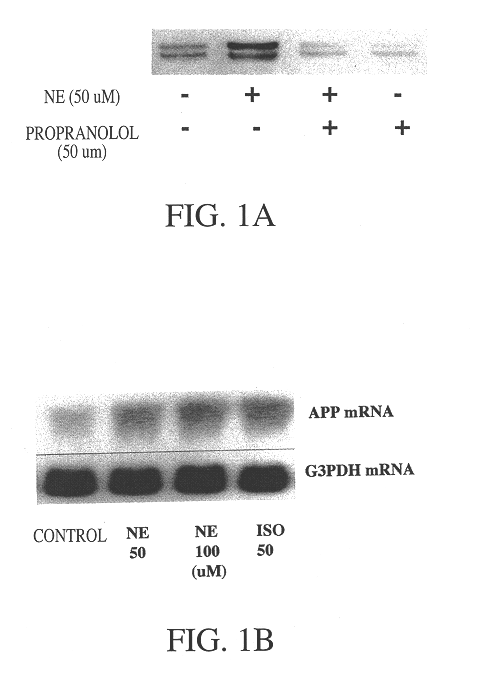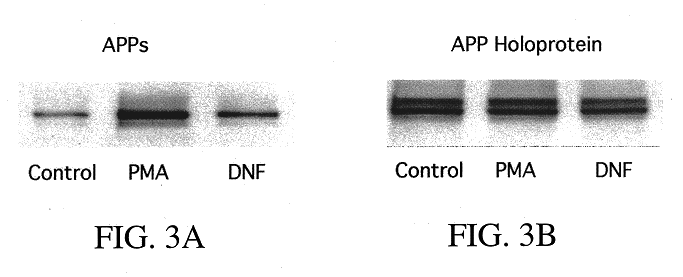Compositions and methods for treatment of neurological disorders and neurodegenerative diseases
a neurodegenerative disease and neurodegeneration technology, applied in the field of compositions and methods, can solve the problems of preventing us from addressing specificity, disrupting app processing, and ad will no doubt become an escalating healthcare problem of unparalleled proportions, so as to prevent neurite dystrophy, inhibit excessive amyloid formation, and alleviate pathological symptoms
- Summary
- Abstract
- Description
- Claims
- Application Information
AI Technical Summary
Benefits of technology
Problems solved by technology
Method used
Image
Examples
Embodiment Construction
Cultures of cortical astrocytes can be obtained from postnatal rats. See, e.g., K. D. McCarthy and J. de Vellis, J. Cell Biol. 85, 890 (1980).
The inventors have shown that the activation of adrenergic receptors present in the cortical astrocytes by 50 .mu.M norepinephrine (NE) for a period of about 24 h increases the amount of cell-associated APP holoprotein by .about.1.7-fold relative to amounts in untreated cells (See, FIG. 1, A), as measured using Western blots. The stimulatory effect of NE on total APP protein is inhibited by the .beta.-adrenergic antagonist propranolol (50 .mu.M) which, on its own, has no significant effect on basal APP protein levels.
On Northern blots, APP mRNA levels are about 1.7-fold and about 1.6-fold higher after 24 h treatment with NE (50 or 100 .mu.M) or the .beta.-adrenergic agonist isoproterenol (50 .mu.M), respectively, than those in untreated cells (FIG. 1, B); these increases are also abolished by 50 .mu.M propranolol (FIG. 1, C). However, astrocyt...
PUM
| Property | Measurement | Unit |
|---|---|---|
| length of time | aaaaa | aaaaa |
| length of time | aaaaa | aaaaa |
| length of time | aaaaa | aaaaa |
Abstract
Description
Claims
Application Information
 Login to View More
Login to View More - R&D
- Intellectual Property
- Life Sciences
- Materials
- Tech Scout
- Unparalleled Data Quality
- Higher Quality Content
- 60% Fewer Hallucinations
Browse by: Latest US Patents, China's latest patents, Technical Efficacy Thesaurus, Application Domain, Technology Topic, Popular Technical Reports.
© 2025 PatSnap. All rights reserved.Legal|Privacy policy|Modern Slavery Act Transparency Statement|Sitemap|About US| Contact US: help@patsnap.com



